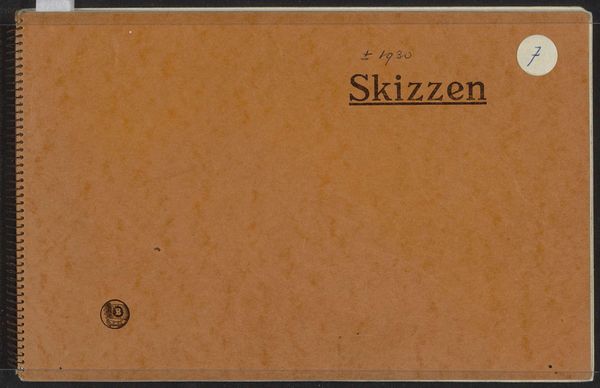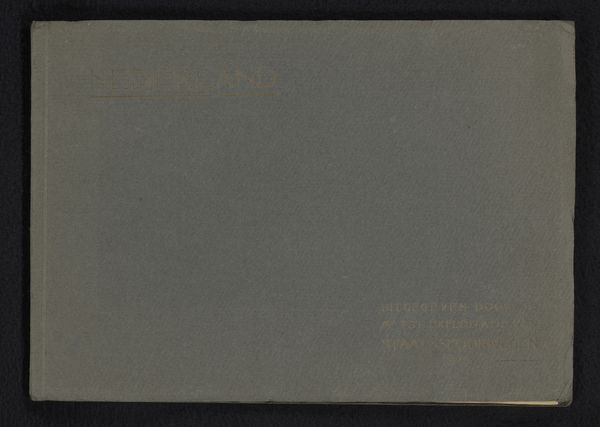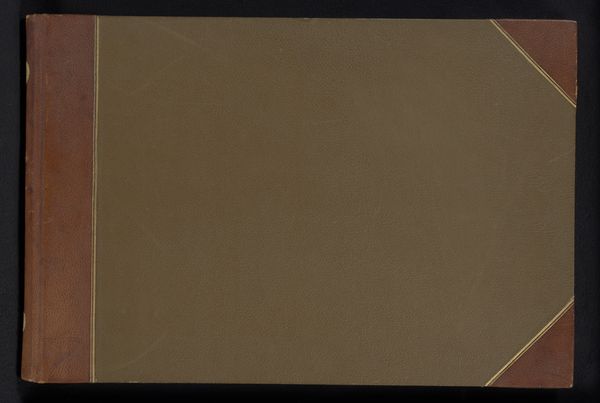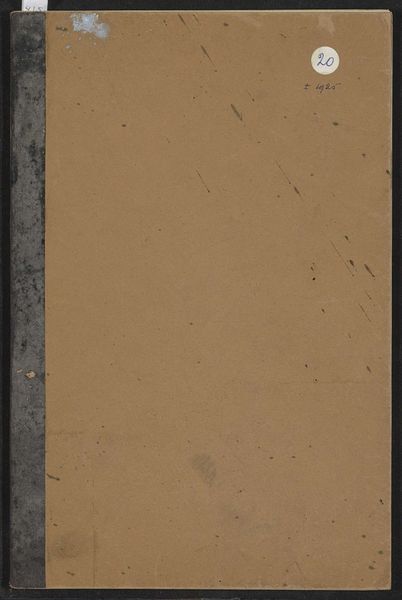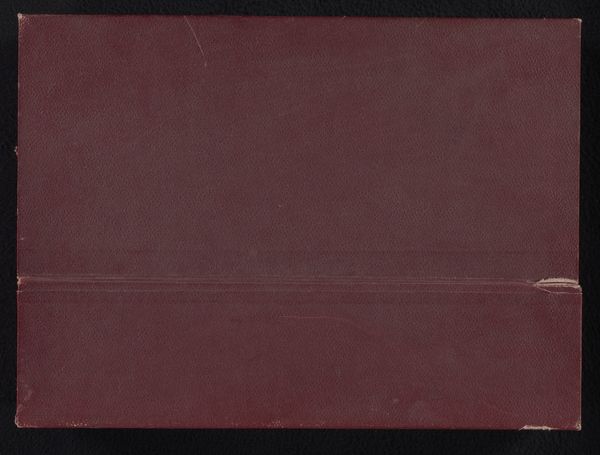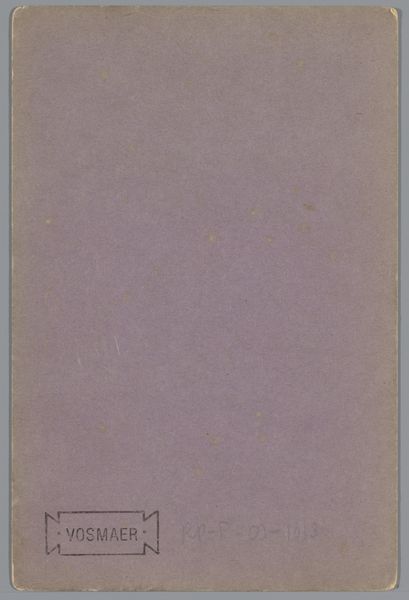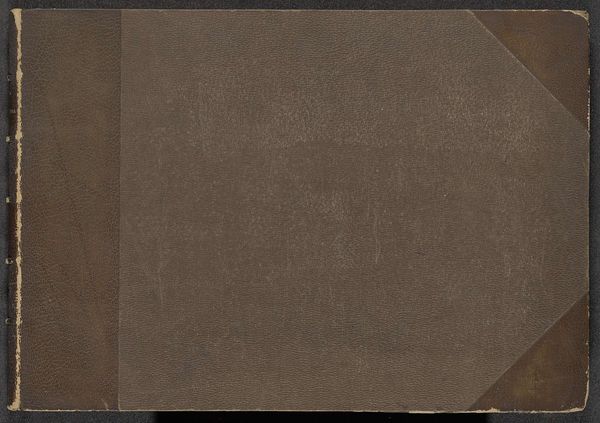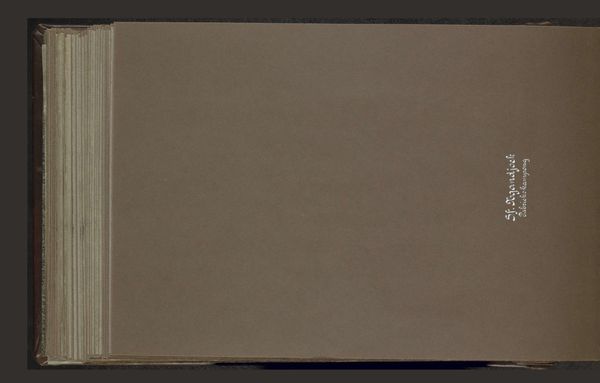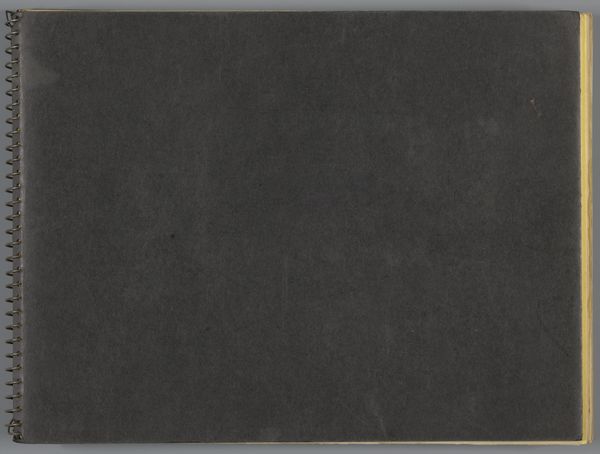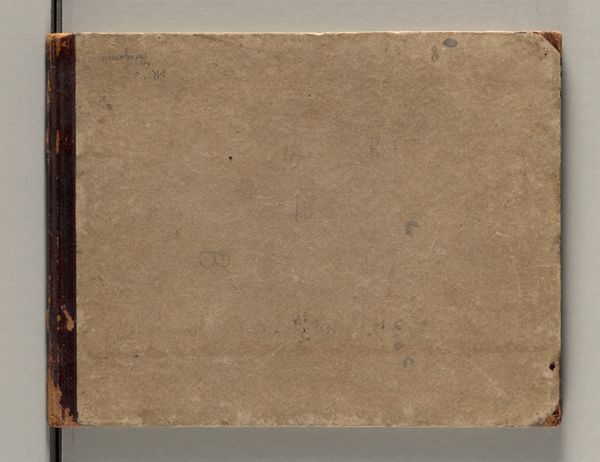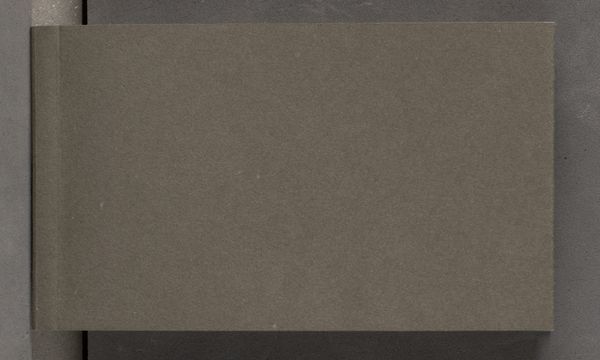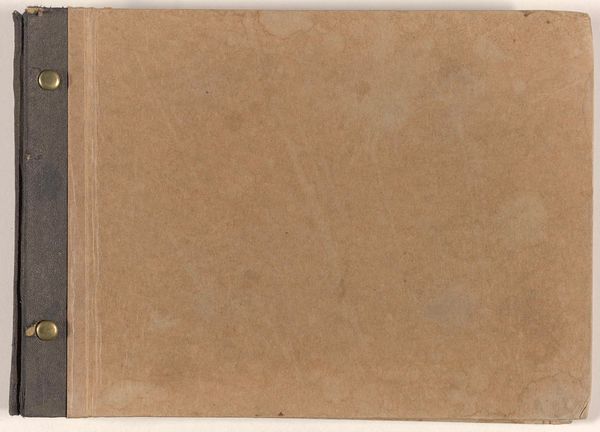
drawing, paper
#
drawing
#
paper
#
coloured pencil
Dimensions: height 147 mm, width 230 mm, thickness 5 mm, width 452 mm
Copyright: Rijks Museum: Open Domain
Curator: Let’s turn our attention to “Schetsboek met 25 bladen”, or “Sketchbook with 25 sheets”, created around 1935 to 1940 by Carel Adolph Lion Cachet. It's currently held at the Rijksmuseum and composed of drawings rendered with colored pencil on paper. Editor: It looks like an unopened diary full of possibilities! I find myself curious about what stories and images it may hold within. The raw cardboard feel and muted brown color hints at humble origins and working-class hands. Curator: Cachet, although not exactly a household name today, was actually very prominent in the Dutch decorative arts scene of the early 20th century. He made a name for himself designing for stamps, posters, and textiles, embracing a wide variety of popular outlets for his craft. His artistic perspective has touched much of the country. Editor: That’s interesting! I suppose the term “sketchbook” implies initial studies or perhaps preparatory work. Were his commercial art and these sketches interrelated, maybe experiments that led to some commercial outcomes? Or were his sketches separate personal explorations? Curator: Good questions! Unfortunately, there is no specific insight on whether or not these images translate to something he has developed later on for other endeavors. This sketchbook in particular provides some rare intimate glimpses of his creative process, revealing the foundation of his wider public design. It reflects Cachet's engagement with social themes of the era through the artistic tools he explored, such as coloured pencil. Editor: So it's a record of visual thinking from a politically and socially engaged artist? One ponders, then, the nature of the drawings. Are they challenging, evocative, resistant? Considering the date of this piece—just before and during World War II—one may reflect on how these sociopolitical issues are expressed visually in private. Curator: Absolutely, especially within the larger context of design and public art production during a very pivotal moment in history. This volume grants invaluable, and intimate, context. Editor: This reminds us that even in times of war and political tension, people find ways to explore and express, even if only within the private spaces of their notebooks. Curator: A wonderful summation. Thank you. Editor: Thank you.
Comments
No comments
Be the first to comment and join the conversation on the ultimate creative platform.
